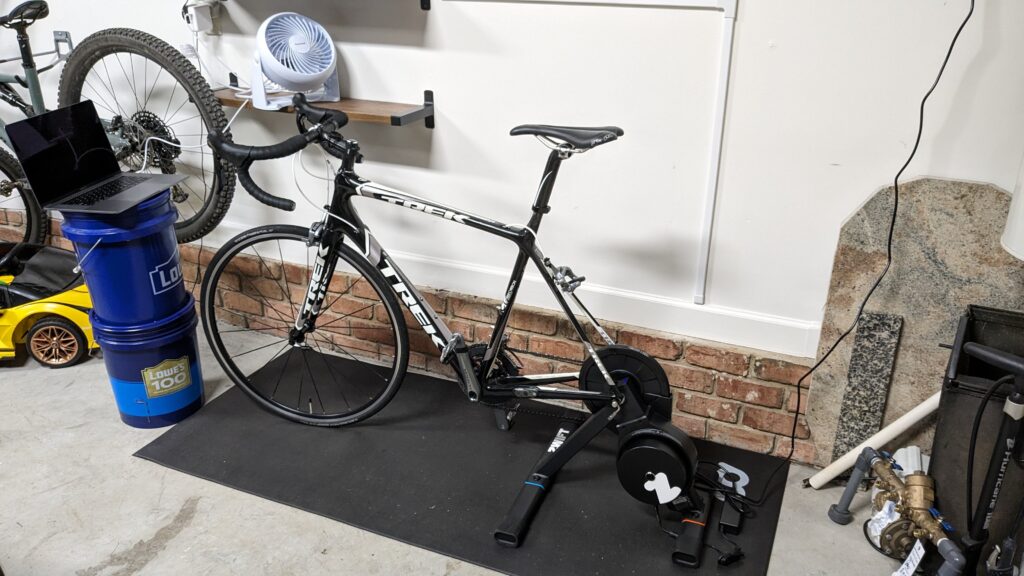For the past 20 years I’ve biked or ran about once a week, usually on the weekend. But recently it’s been harder to make time for it. I think my weekends are busier than they used to be.
So I bought a smart bike trainer at the end of September so I can more easily exercise at night or on rainy days if needed. Here’s my setup:
Yes, it’s very garage-y. The thing that makes it “smart” is that you can connect to it with your phone, laptop, or bike computer and control the resistance. Either with Bluetooth or ANT+, which is a wireless standard for connecting fitness equipment.
So far I’ve been using it with Zwift, which is “a massively multiplayer online cycling training program.” It shows rendered roads and scenery and simulates riding, with flats and hills. Here’s a screenshot I took earlier tonight:
The trainer is great. The feel isn’t exactly the same as real riding but it’s fine. I still love being outdoors and this isn’t a substitute, but I do feel like I’m getting a workout and I think I’ll be able to make myself keep using it.
Zwift is fine. So far I mostly don’t care about the multiplayer/social aspect. Rendered video is fine but I might actually prefer real video of pretty roads. There are a few other apps that I’ll probably try at some point (ROUVY, FulGaz, Kinomap, and BKOOL all look interesting), but I’m not in a hurry because my trainer came with a 1 year Zwift subscription.
Details About The Trainer
The specific trainer I got is the Zwift Hub. It’s a repackaged JetBlack VOLT V2. It looks like they don’t sell the “Zwift Hub” anymore—only the slightly different “Zwift Hub One.” The difference is that the Zwift Hub One has a single cog with some sort of virtual shifting thing, whereas the older Zwift Hub uses a full cassette and you shift with your bike’s normal shift levers. It looks like the Wahoo KICKR CORE has come down in price to $599.99 (which is what I paid for the Zwift Hub) and also includes a cassette and 1 year Zwift subscription, so that’s equivalent.


